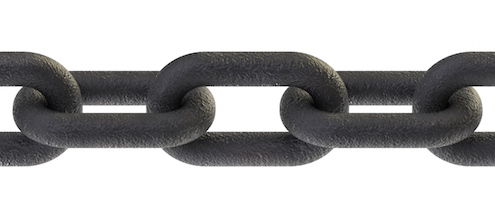
Unpacking the WCI: Thinking linking
Both Ontario and Québec have ambitious GHG reduction targets for 2030. In their effort to hit these targets both provinces have hitched their wagons to California and its integrated cap-and-trade system, the Western Climate Initiative (WCI). The stakes are high—as we’ve seen with the EU ETS system’s troubles over the last number of years, the devil is in the details when it comes to cap-and-trade system design. To unpack some of the finer points of the WCI, this summer we’ll be doing a blog series Unpacking the Western Climate Initiative (WCI), which will look at some of its key design features. In today’s blog we discuss the effects that linking between Québec and California has had.
The benefits of linking
As we argued in our report, The Way Forward, linking carbon pricing systems leads to lower costs for everyone. As the California Air Resources Board puts it: “linking benefits each jurisdiction – the direct result of lower costs of abatement and expanded reduction opportunities.”
Both Québec and California appreciated this early on. Québec knew that its market would be too small without a larger partner, and also wanted to save on the cost of program administration. And California knew linking would help it to create a more liquid, efficient market. Studies showed that linking the two programs would save costs. In a 2012 analysis by the WCI Economic Modeling Team, linking was expected to lead to $34-110 million in net gains for Québec and $284-442 million for California.
So linking California’s and Québec’s cap-and-trade systems clearly benefits both parties. But the question of how permits flow between Québec and California still has important implications.
Permit flow driver #1: Abatement costs
How permits flow in a linked system depends on two factors – jurisdictions’ costs of abatement, and how tightly their emission caps are set. Each jurisdiction’s cost of abatement will depend on its mix of economic sectors and the specific technologies they employ. Québec, with its hydro-dominated electricity sector, has relatively high costs of abatement, while California has a relative abundance of low-cost mitigation actions. This means that all else being equal, abatement under the linked system is more likely to occur in California, and Québec will be a net buyer of permits.

Permit flow driver #2: Emission caps
The second driver of permit flow is how tightly GHG emission caps are set. Having a tighter cap in one jurisdiction makes it more likely to be a net buyer of permits. The reasoning goes like this: because a tight cap requires deeper emission cuts, the costs of mitigation rise as increasingly expensive abatement options are required; once the low-cost actions have all been pursued, it becomes cheaper to instead import permits from the other jurisdiction, where mitigation is comparatively cheap due to the less-stringent cap. The relative stringency of jurisdictions’ caps can therefore be an important driver of how permits flow between them.
While cap stringency comparisons can be tricky, we can be reasonably confident in saying Québec’s system has a tighter cap. First, Québec’s initial 2013 system cap was smaller as a share of its 1990 emissions than California’s (1990 is the base year that both jurisdictions use for their emission targets), at 28% in Québec compared to 38% in California. Second, since 2015 the cap in Québec has been tightening at 4% per year, compared to 3% in California. So Québec’s cap both started tighter and is tightening at a faster rate.

The net effect of the two drivers
Québec’s greater cap stringency means that its abatement costs will be higher and that it will be more likely to import permits from California. And because California’s available mitigation options were cheaper than Québec’s to begin with, the two drivers actually reinforce one another—they both drive permits to flow from California to Québec and investment capital from Québec to California.
All of this was expected early on by both parties. California in fact saw the potential in-flow of revenue from Québec as one of the most important reasons to go through with linking. And while this potential for a net outflow of capital from Québec caused some hesitation in the province, the attractiveness of lower private sector compliance costs ultimately carried the day. These benefits have since been shown to be significant – permits were estimated to cost Québec emitters 21-57% less than they would have in a Québec-only system.
California’s permits are cheaper—so what?
The question all this raises is whether Québec (and Ontario, which plans to link in 2018 and has mitigation costs similar to Québec and a cap stringency that will land somewhere in the middle) should care. The answer, as is often the case, depends on your perspective. If your priority is for Québec to cost-effectively meet its own obligations, then California’s cheaper mitigation and weaker cap should not be a concern, since they keep imported California permits cheap. But if your priority is for Québec to retain and attract investment capital for its low-carbon transition, then California’s comparatively cheap permits could be a concern, since they draw low-carbon investment away from Québec.
In weighing these perspectives, Québec and Ontario have clearly both decided that the pros of linking outweigh the cons. Similarly, California has also made its own pros vs. cons judgement call—that the benefit of capital influx is worth the cost it carries in the form of higher permit prices for its own regulated emitters (driven by the greater demand for its permits).
The case of WCI shows us that the benefits of linking are real, but they can also be distributional—everyone benefits when linking systems, but not necessarily in the same way.




Comments are closed.